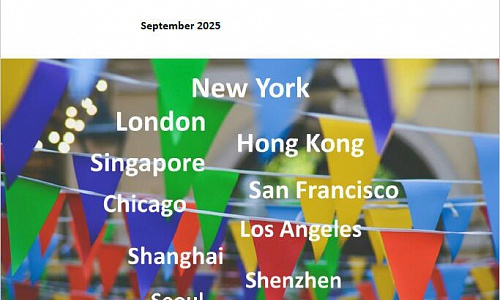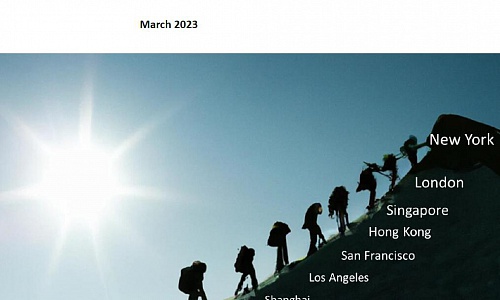 Author: Wang Jianye, Managing Director, Silk Road Fund; Professor of Economics and Director of the Volatility Institute at NYU Shanghai; recently has been selected as Rotating Secretary General of the International Working Group on Export Credits (2020-2023).
Author: Wang Jianye, Managing Director, Silk Road Fund; Professor of Economics and Director of the Volatility Institute at NYU Shanghai; recently has been selected as Rotating Secretary General of the International Working Group on Export Credits (2020-2023).
Editor’s Note: At the Belt and Road: Seize the Next Wave of Growth in Eurasia forum on November 23 in Venice jointly held by China Development Institute and The European House – Ambrosetti, Professor Wang talked on the financial issues and challenges that Belt and Road Initiative faces.
Over the three years since the launching of Belt and Road Initiative (BRI), from an investment and financing perspective, what have happened? What have we learned? What are the key challenges going forward?
What have happened?
It has almost become a cliché that the vast landmass in the Eurasia continent, with growing population and markets, has great growth potential. Investment to increase connectivity in this not well-connected region would expand the market, creating effective demand and growth. However, while officially-supported institutions increased their financing, we have not yet seen large capital flows into the developing countries in this region. Why?
A recent World Bank research is telling.1 Their data show that per capita investment growth in emerging market and developing economies has been falling rapidly since 2010, with non-BRICS commodity exporters from roughly 7 percent in 2010 to 0.1 percent in 2016. This is in contrast to the partial recovery in developed economies. By 2014, investment growth there had returned to its long-term average rate, about 2 percent. Their research points out that sluggish investment and growth in developing countries, notwithstanding record-low external borrowing costs and large unmet internal investment needs, can be attributable largely to domestic problems – worsening business environment, rapid buildup of enterprises debt, and policy uncertainty – while external factors such as major countries’ economic slowdown also played a part.
Against this background, let’s look at data from China. Three developments are worth noting from China’s international investment flow data of the last few years:
First, outward direct investment (ODI) increased dramatically in 2015-2016, driven largely by private enterprises. ODI since the global financial crisis could be divided into two periods: 2008-2013, 2014-2017. Data compiled by government and market sources indicate that private sector drove the recent outflow acceleration. ODI relative to GDP rose from 1.1 percent in 2014 to 1.5 percent in 2015 and 1.9 percent in 2016.
Second, destination markets also shifted from emerging and developing economies to developed countries. It should be noted that ODI by disclosed value and number of deals in the Belt and Road developing countries have also increased, admittedly from a very low basis. In conjunction with the rise of the private enterprises, ODI target industries experienced a shift, from primary commodities to services, high value-added manufacturing, and consumption related sectors.
Third, the recent surge in capital outflows especially in 2015-2016 reflects to certain extent masked capital flight. Unusually large and rapid buildup of foreign assets by some domestic entities through M&A or purchases in real estate and unrelated businesses became a source of concern. Some entities including in the financial industry accumulated large domestic liabilities in support their foreign spending spree, increasing balance sheet mismatches. “Errors and omissions” in the balance of payments were also indicative of such a flight, which increased from -0.6 percent of GDP in 2013-14 to about -2 percent of GDP in 2015-16.
The regulatory authorities responded by strengthening the enforcement of capital flow regulations and domestic financial prudential requirements. Starting from November 2016, irregular ODI has subsided. Recent BOP data suggest that net direct investment, which turned deficit in 2016, returned to small surplus in the first three quarters of this year.
What have we learned?
Financing the development of the Belt and Road has to be on market principles. Multiple factors affect China’s capital flows, but primarily market forces in the international arena. Our analysis points to three types – cyclical, structural, and governance drivers. Cyclical forces stem from changing expectations on domestic vs. foreign interest rates and exchange rate movements. Structural forces result from rising domestic costs—wages, land prices, tightening of environment regulations, etc. Governance factor affects SOE investment through corporate governance; it also affects private investment through its impact on uncertainty regarding taxation, regulatory treatment, and property rights protection. In opening up its financial account, China faces domestic financial stability constraint.
The principles of sharing are very important for BRI financing sustainability. The BRI is not a “Marshall Plan,” and cannot be a one-actor show. To achieve “win-win” outcomes, in May 2017 finance ministries of 26 countries endorsed the Guiding Principle on Financing the Development of the Belt and Road, highlighting “equal-footed participation, mutual benefits, and risk sharing.”
Challenges going forward.
First, the leadership challenges to state-owned enterprises. As the Chinese economy is in transition, SOEs still play dominant role in some sectors and significant in others. SOEs’ return on assets and investment return have been falling in recent years, and significantly below that of private enterprises. According to the IMF, adjusted for implicit support through the use of land and natural resources, and lower implicit financing cost, SOEs’ return on equity is estimated to have become negative since 2012.2 In the industrial sector, SOEs account for more than half of corporate debt and 40 percent of industrial assets but less than 20 percent of industrial value added.
Returns on SOE overseas investments are likely to be much lower on average than private enterprises. These companies, especially their leadership, are facing daunting challenges to increase efficiency and profitability. For cross-border M&A, more important is post-acquisition restructuring and management. Strategic vision, efficient decision making and high-quality execution are vital, which require sound corporate governance, market consistent incentives and market-driven corporate culture to attract and retain talents. All are leadership demanding.
Second, the challenges for direct investment in developing economies in the Belt and Road. Many countries are low-income, small size, placing viability limit on projects that require larger market. Red tape and rent-seeking also add to the hidden costs of doing business there. Moreover, counterparty risks are high. It is often difficult to find local corporate partners with solid balance sheet and performance track record. Payment capacity is typically a concern with high risks over the longer term. Few countries or companies there are in investable credit rating. Many are vulnerable to global and commodity cycles.
Coping with these risks would require our enterprises operate on market principles, thoroughly understand local conditions, and on that basis match investors of various preferences for risks and returns with the right projects and other partners. Special attention should also be paid to social responsibilities and environmental protection. Building alliance with local stakeholders and going green would help achieve commercial success in the relatively risky segments of the market.
Third, the challenge of expanding the use of RMB in overseas direct investment. In the last several years, large ODI and other capital outflows have led to a decline in China’s foreign exchange reserves from nearly $4 trillion to slightly over $3 trillion. At this stage, maintaining a sizable official reserves before the RMB exchange rate can be freely floating is important for financial stability. Expanding ODI thus would entail the use of RMB. Although the RMB has become a composite currency of the SDR, its share in World foreign exchange transactions is still smaller than several currencies that are not in the SDR basket.
The challenges are to progressively develop the relevant infrastructure, reduce RMB funding and holding costs, build up so-called “network externality” (i.e., a greater number of users increases the value to each). Of course, international use of a currency depends ultimately on market acceptance, which could be a long process. Stable currency value and the rule-of-law institutions and governance are therefore fundamental.
Finally, the challenge to modernize governance at home in face of increasingly free cross-border mobility of capital and talents. Public sector reforms are particularly relevant in this regard. Exposing the SOEs fully to market competition through opening up protected sectors and removing implicit subsidies would force restructuring, increase efficiency, and contribute to leveling the play field for all enterprises.
Fiscal reforms to make public spending accountable, reduce uncertainty in taxation, and realign central-local fiscal relations will go a long way in instilling confidence and reducing capital flight. Reform to make the tax system more progressive will not only help alleviate income inequality, but also put the public finances on a more sustainable footing, good for internationalization of the RMB.
The recent State Council Opinion reiterated that effective protection of property rights is a cornerstone of our society. The challenge is not just in implementation, but in the difficult institutional and cultural transformation to a “rule-of-law” society.
The BRI calls for “opening-up” of the countries in the Eurasian continent. In doing so, it also creates the conditions for institutional and governance modernization in these countries. Real progress in these reforms will not only transform the business community but also the relevant society, benefiting people along the Belt and Road, creating truly “win-win” outcomes.
------------------------------------------------
1 Ayhan Kose, Franziska Ohnsorge, and Lei Sandy Ye, 2017. “Weakness in Investment Growth: Causes, Implications, and Policy Response.” Policy Research Working Paper 7990, World Bank, Washington DC.
2 International Monetary Fund, Staff Report for 2017 Article IV Consultation, paragraphs 18-19, http//www.imf.org.








